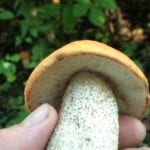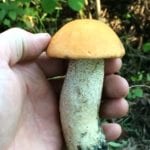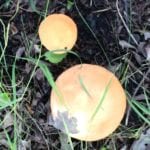The Honesty of Fall
The transition from summer to fall can be a difficult one. Idyllically, summer is a time of warmth and abundance, of growth and prosperity. The land is alive with a variety of birds, insects and flowers, as people roam the landscapes and head off for summer adventures. The trees are full of leaves and seeds, while the fruit bearing shrubs have shared their bounty with people and animals alike. Many people have spent time swimming in their favourite lake or other watering hole, attended an outdoor music festival, or sat in the sun soaking up the rays while reading a book or enjoying a BBQ. We’ve all wished at some time that summer would last forever and that winter would never come (or make as brief an appearance as possible).
But as we all know, the time inevitably comes when the nights begin to cool off and we hear that familiar honking sound as the geese return from the north. We watch with trepidation for harbinger of winter, as the trees suddenly lose their clothing and leave the branches bare. The chaos and exuberance of summer is replaced by something a bit more honest, as the land is once again stripped down to its essence.
The Naked Forest and the Wild Harvest
As someone who enjoys trail walking, I am always amazed when the forest opens up in the fall, and I can once again see through the landscape as opposed to having my view of the sky and the horizon obscured by leaves. The study of leafless trees is a great educational tool for understanding a forest ecosystem.
One of the easiest ways to identify a tree in the summer is by looking at the size and shape of a leaf, or by the flowers, seeds and fruit. The wobbly and bulbous oak leaf is iconic, as is the classical maple tree emblem that we all know so well as Canadians. Many can recognize a choke cherry bundle or a Saskatoon bush when the berries come out. However, when the leaves come off and the fruit has fallen to the ground, it can be a bit trickier to distinguish one shrub from another.
For most people, there is little need to know the difference between one tree or shrub and another. However, as someone who likes to make winter trails through the bushes and to trim shrubs in the winter to help “revitalize” an overgrown hedge, knowing one species from another is very important. Some species such as Hazelnut are very prolific and will regrow instantaneously from new shoots when trimmed (like a lilac bush), whereas plums and young oaks are rarer and don’t multiply to the same extent. When you focus on the bark alone and the overall shape of the tree other features become apparent. You begin to differentiate between the dead wood that is great for stating fires and the living stems. The mossy stems and weathered bark are tell tale sign of aging. When you look often enough, you begin to see that some stems are purplish (Saskatoon), others are white (like cranberry), some are light brown (hazelnut).
When you look at the shape of the tree or shrub, you can begin to see the effect of the older shrubs have over younger ones as they crown over them, forcing them to shoot out sideways or produce week and gangly stems that are desperate to steal whatever lights pokes through the canopy. By contrast, young growth has an immediate vibrancy and color that is unmistaken. The dormant buds appear ready to burst even though they are just beginning their seasonal rest.
There are even a few shrubs that keep their berries into the winter, such as the highbush cranberry with its ruby red color and sour smell, the hawthorn with its long and very sharp thorns and mealy dark red berries, or rosehips with their prickly stems and hundreds of tiny seeds inside. I try to hold off picking too many of these in the fall, as they are even more delicious in January when out for a winter walk or snow shoe.
Mushroom Hunting
For mushrooms hunters fall is a fantastic time (when the weather cooperates). This past year we had a good amount of rain, which seemed to prime the ground for an abundance of edible mushrooms such as Boletes which appears in the late summer/early fall and Honey Mushrooms (which the Ukrainians call Pidpenky) – they are out right now. The forests become filled with that earthy mushroom odor, that fills your nostrils while out for a stroll.
When learning the craft of mushroom gathering, it is very helpful to be guided by an expert since picking and consuming the wrong mushroom can be dangerous and potentially fatal. Even edible mushrooms (such as the pidpenky) need to be cooked first to get rid of toxins, otherwise they too can do you harm. I believe there’s a saying about mushroom hunters that goes like this – “There are old mushroom hunters, and there are bold mushroom hunters, but there are no old and bold mushroom hunters“. Be wary.
However, once you get to know a few species and understand their habitat and appearance, searching for them is fantastic. Pidpenky appear just as the leaves are falling, and their caps are typically a honey brown color that blends in with the fallen leaves as they slowly fade to brown and yellow. By contrast, the Boletes mushroom is orangey red on top, with a foam-like underside (no gills) and they can grow quite large. They are extremely heavy mushrooms, and you can feel their weight in your hand when you pick one. I still consider myself a novice picker, and I take more enjoyment from the discovery as opposed to the eating, but picking mushrooms is increasingly becoming yet another marker of time for me, particularly in the fall.
Kindred Spirits
Many birds have departed once September rolls around. The robins are gone along with most of the songbirds. The hawks are readying to leave, yet I still see some hunting the newly harvested fields in search of mice who have lost their protective cover. The wood peckers can once again own the woods and the chickadees can flit around as they see fit. It’s interesting to see the crows take stock of what’s left behind, as I often see a few casually surveying me on my walks, and croaking out my location to their friends (or that is my best guess at what they’re saying). I haven’t heard the horned owls lately, but I know that when December comes they’ll be out calling to each other looking for mates.
The other bird that always impresses me this time of year is the ruffed grouse, which I often stumble upon haphazardly and get startled as it explodes from a log and shoots off into the tree tops. These birds never fail to catch me off guard and leave me momentarily shocked as they sail off a short distance to resume their hiding spot. It’s a good reminder to keep my eyes sharp while walking down the trails, observing what’s “left behind” in the fall.







